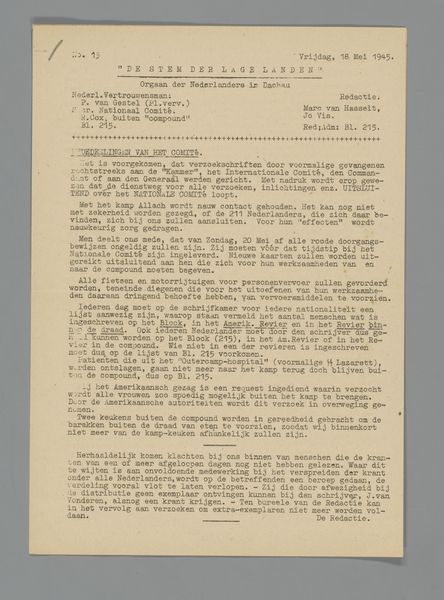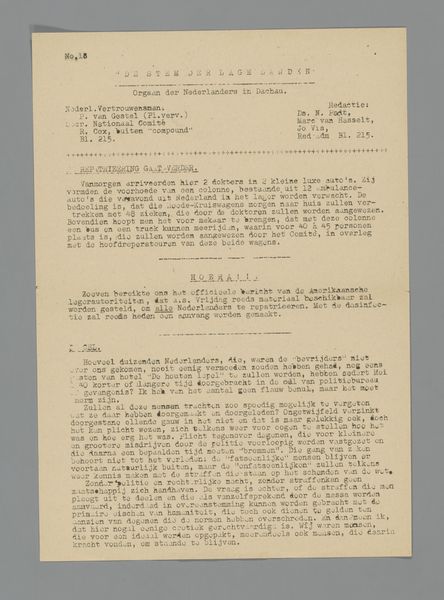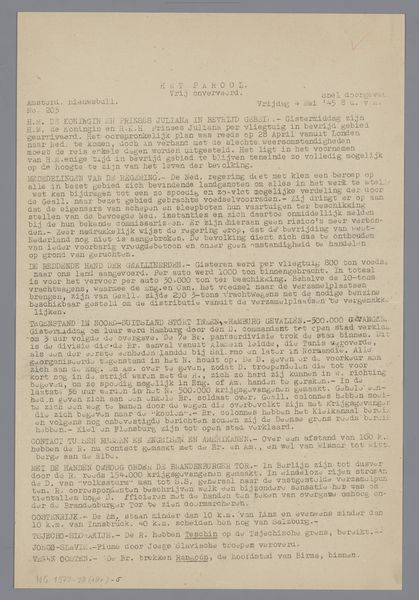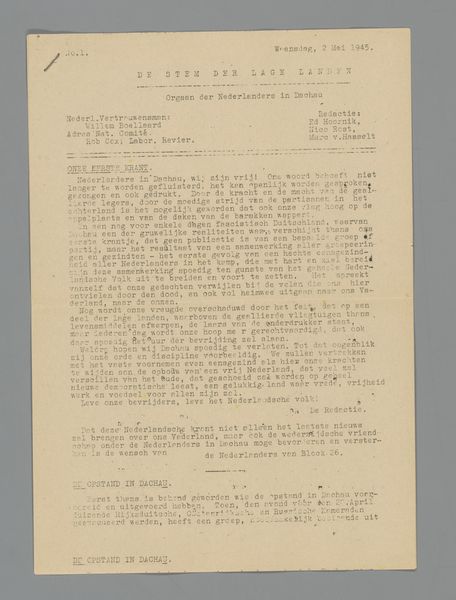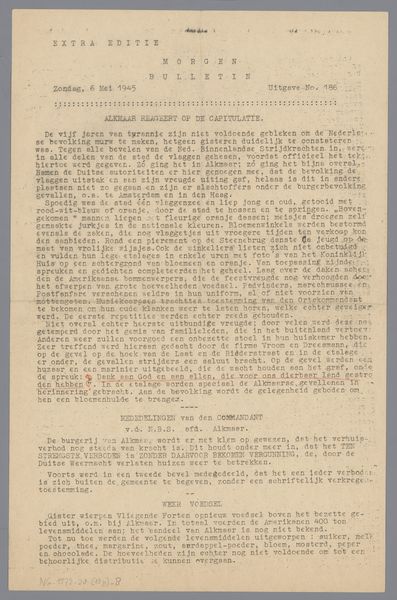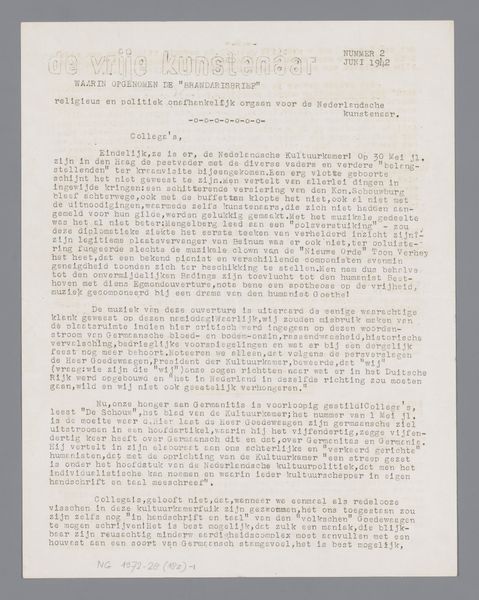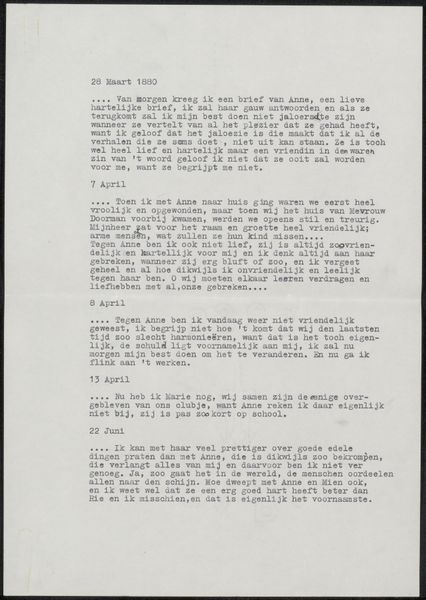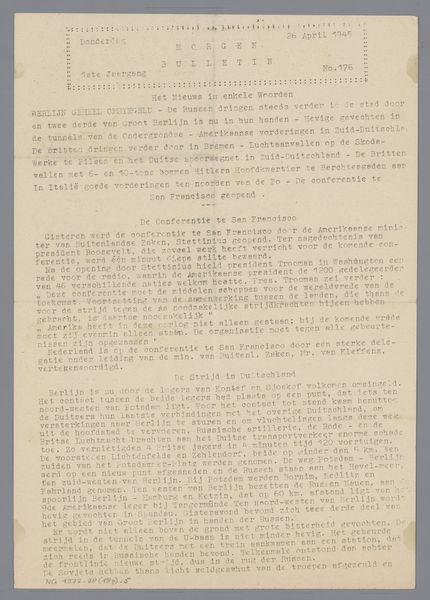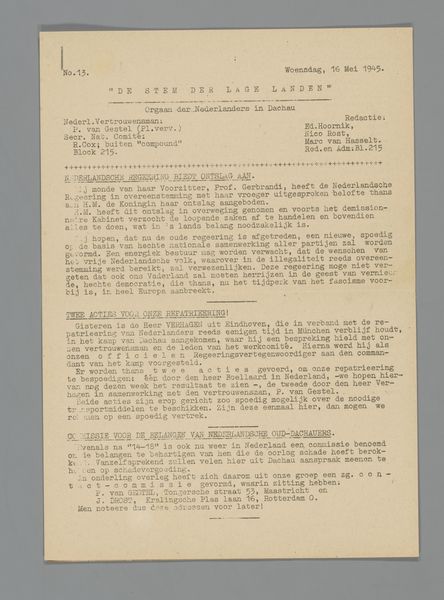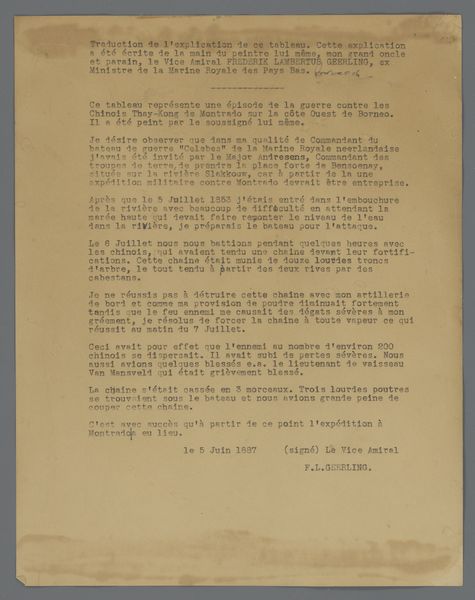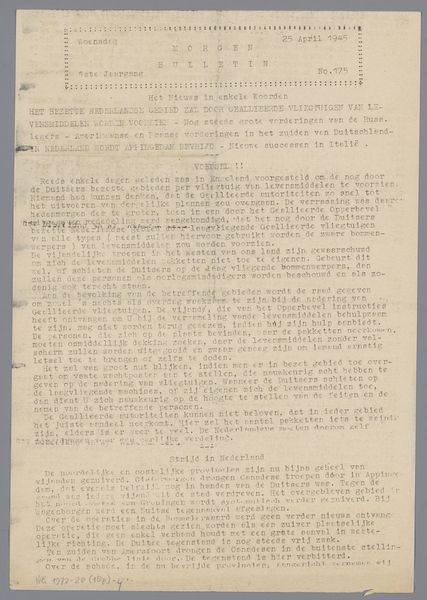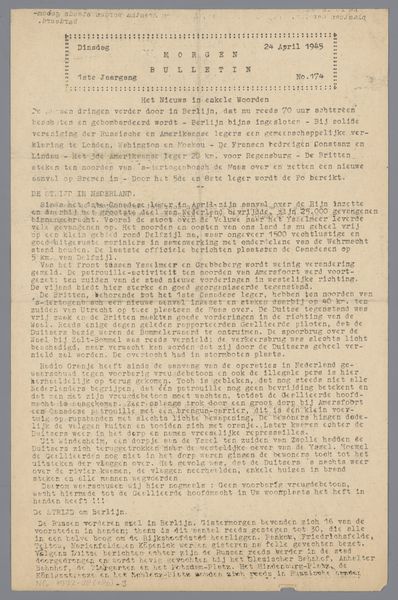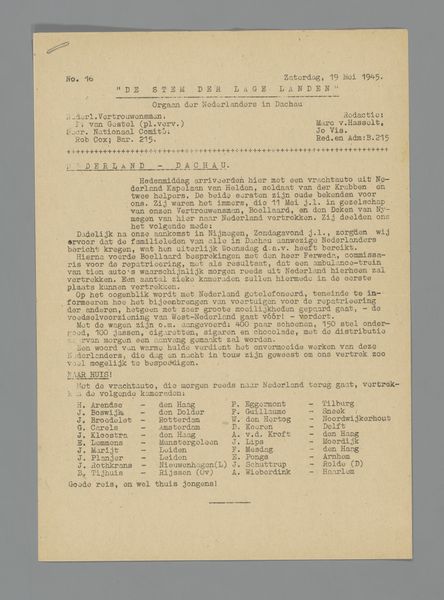
print, textile, paper, photography, collotype, poster
# print
#
textile
#
paper
#
photography
#
collotype
#
poster
Dimensions: height 297 mm, width 210 mm
Copyright: Rijks Museum: Open Domain
Curator: This is "De Stem der Lage Landen, nr. 17, 21 mei 1945," likely from 1945, a printed poster credited to Jo Vis. The poster utilizes collotype and photography techniques to present text printed on paper. What strikes you first? Editor: The stark typography combined with that textured, fibrous paper gives it an immediate, austere quality. It looks functional, urgent—like a document ripped straight from a notice board during a crisis. Curator: Precisely. “De Stem der Lage Landen,” or “The Voice of the Low Lands,” served as a newsletter published in Dachau, specifically for Dutch prisoners. The text provides vital information, focusing here on quarantine measures to combat typhus and burial arrangements. Editor: So, it’s a confluence of institutional directives and a desperate plea for public health. The text regarding quarantine and potential disease is unsettling, while that section on burials is quite somber. This poster reveals much about the camp’s conditions. Curator: The directives about reporting lice directly reflect the power dynamics. Prisoners are forced into policing their own bodies, and each other's, to mitigate an already desperate situation. The act of publishing feels like a form of resistance. It is important to remember the specific socio-political context during its creation to better understand the message behind it. Editor: Absolutely. Despite being created within an oppressive environment, the poster attempts to establish a sense of community. Knowing that the general will give a religious service every day, this speaks to an audience longing for hope, longing for a life after Dachau. What strikes me is how communication—even in a stripped-down format like this—becomes a crucial lifeline and historical testament. Curator: I find myself deeply affected by how an artwork that so clearly functions as an announcement and historical record manages to carry such a poignant narrative of survival and a community in resilience against extreme conditions. Editor: I’m moved to think how visual ephemera like this offers access into an event, bringing individual experiences forward for a larger audience to witness and study.
Comments
No comments
Be the first to comment and join the conversation on the ultimate creative platform.
